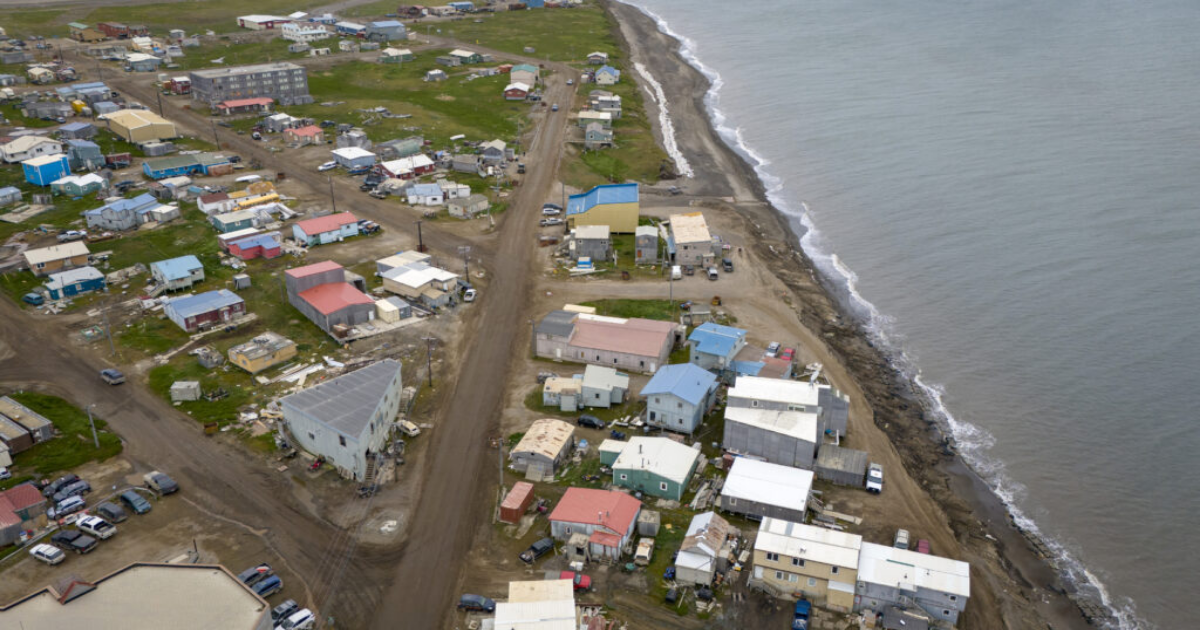Amid the layoff notices sent to stunned employees of the Department of Health and Human Services Tuesday was yet another surprise: some of them, including top National Institutes of Health officials, were offered the chance to transfer to the Indian Health Service.
“The Indian Health Service (IHS) has an untenable vacancy rate of approximately 30%. This underserved community deserves the highest quality of service, and HHS needs individuals like you to deliver that service,” said an email signed by Thomas J. Nagy Jr., deputy assistant secretary for human resources at HHS that went out to some employees who were being placed on administrative leave effective Wednesday.
The email included a bulleted list of IHS territories where these jobs would be offered, including: Alaska; Albuquerque, N.M.; Bemidji, Minn.; Billings, Mont.; the Great Plains region; the Navajo reservation in the southwestern U.S.; and Oklahoma. It asked employees to indicate a preference for relocation among these regions by Wednesday at 5 p.m. ET.

Those who received the offer, according to news reports and social media posts, include Brian King, the top tobacco regulator at the Food and Drug Administration; Jeanne Marrazzo, director of the National Institute of Allergy and Infectious Diseases; Emily Erbelding, who directed the division of microbiology and infectious diseases at NIAID; Diana Bianchi, director of National Institute of Child Health and Human Development; and Dylan George, director of the CDC Center for Forecasting and Outbreak Analytics.
It’s not clear why certain employees — many of them longstanding and possibly more difficult to dismiss outright because they are commissioned officers of the U.S. Public Health Service — were given the offer and not others, how accepting the offer or refusing it could affect employee benefits such as severance pay, and what work such regulators and researchers would do within the IHS. STAT requested clarification on these issues from HHS.
“I’ll just say it, I think it’s a way to try to get people to quit,” Phil Huang, director of Dallas Health and Human Services, said in a media briefing on the cuts held Tuesday. While he emphasized the importance of the IHS, he said the way people were given such short timelines to respond made it nearly impossible for people to take the offer.
Jeremy Berg, a former NIH director and editor of Science who has been closely tracking cuts and changes at federal health agencies, said he had the highest respect for the work of IHS but said the move suggested to him that Trump administration officials “are trying to humiliate people.”

The offer was met with confusion by many observers familiar with IHS and its needs. While it is true the agency has a longstanding vacancy rate, those openings are largely for positions such as physicians, nurses, and other care providers, not research scientists, analysts, and managers.
“Don’t know why they are being transferred to IHS,” said one Indigenous scientist who has been tracking changes at the federal level that impact his community. “It’s already too heavy with bureaucracy.”
The IHS, an agency within HHS, is the principal federal provider of health care to American Indian and Alaska Native people. It has a budget of roughly $8 billion.
The scientist, who asked for anonymity to protect the work he is doing that involves federal agencies, said HHS Secretary Robert F. Kennedy Jr. seems to have an “affinity for natives,” noting that planned cuts to probationary employees at IHS were rescinded by Kennedy after tribal leaders spoke out. In confirmation hearings, Kennedy told senators he would appoint a Native American assistant HHS secretary “to ensure all of the decisions that we make in our agency are conscious of the impacts of on the first nations,” and that he would ensure Indigenous people are included in clinical trials.
But the scientist added that large-scale anti-DEI efforts by the Trump administration are negatively affecting programs to support and train Indigenous scientists. “It’s mixed messaging,” he said. “It seems to be all over the place.”
Tribal leaders in Congress have expressed concern over how cuts to HHS would impact the health of tribal populations.
Many employees, because of family or other obligations, will not be able to uproot themselves to far-flung locations.
“I think it’s a way to make it look like they care about IHS, when in reality they have to know few if any of the folks receiving these offers will be in a position to take them,” said Sam Bagenstos, a former general counsel at HHS in the Biden years and now a professor of law at the University of Michigan.
Others said a plan to abruptly ship some employees to IHS was profoundly disrespectful to the important role of the IHS and the expertise needed to work there. “Our Indian Health Service is a really important part of our public health infrastructure, but it shouldn’t be used as a pawn when actually you should place people into the Indian Health Service that actually are meant to work with tribal nations and are confident to do so,” said Sharon Gilmartin, executive director of Safe States Alliance.
Some described the offers to join remote IHS territories as a kind of exile. “How insulting to IHS and the center directors,” one CDC official told CBS News. “The IHS sites fill critical gaps, they aren’t an American Gulag Archipelago.”
Elizabeth Cooney contributed reporting.
